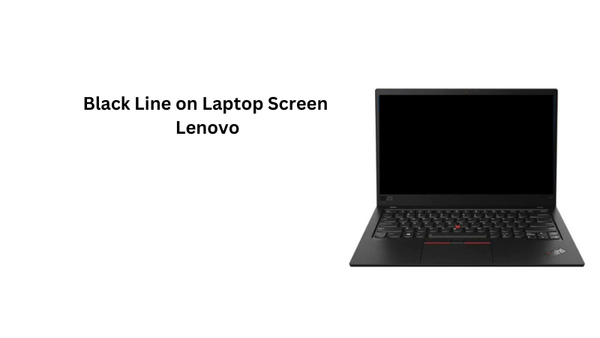Recently, the term "4k supported" has become increasingly popular in the world of technology and entertainment. But what exactly does it mean?
4k refers to a display resolution of 3840x2160 pixels, four times the resolution of a standard HD display. This means that a 4k display can provide a much clearer, sharper, and more detailed picture quality, making it the preferred choice for content creators and viewers alike.
In this article, we will explore what "4k supported" means, its importance in different industries, and how to determine if a device or platform is truly 4k supported. We will also discuss the benefits of 4k technology and its impact on the future of entertainment. So let's dive into the world of 4k and discover its true meaning.
The Importance of 4k Supported Technology
The introduction of 4k technology has revolutionized the way we consume and produce content. Its importance can be seen across various industries, from filmmaking and gaming to streaming services and even sports broadcasting.
For filmmakers, 4k supported cameras allow for higher resolution and more detailed shots, enhancing the overall quality of their productions. In the gaming industry, 4k displays provide a more immersive and realistic gaming experience. Streaming services like Netflix and Amazon Prime Video have also started offering 4k content, giving viewers access to a wider range of high-quality shows and movies.
In the sports world, 4k technology has allowed for clearer and more detailed footage, providing a better viewing experience for fans. With the rise of virtual reality (VR) technology, 4k supported displays are crucial for creating realistic and immersive VR experiences.
How to Determine if a Device or Platform is 4k Supported
With the increasing popularity of 4k technology, it's important to know how to determine if a device or platform truly supports it. One way to check is by looking at the specifications of the device or platform, specifically its display resolution. If the resolution is 3840x2160 or higher, then it is considered 4k supported.
Another way to check is by looking for the "Ultra HD" or "UHD" logo on the device or platform. This indicates that it supports 4k resolution.
It's important to note that just because a device or platform claims to be 4k supported, it doesn't necessarily mean that all content on it will be in 4k. The content also needs to be filmed or produced in 4k resolution for the full effect.
The Benefits of 4k Technology
Aside from providing a much clearer and more detailed picture quality, 4k technology also offers several other benefits. One of the main advantages is its ability to future-proof content. As technology continues to advance, 4k displays will still be able to provide high-quality viewing experiences for years to come.
Additionally, 4k technology allows for larger and more immersive screens without compromising on image quality. This makes it ideal for home theaters and commercial use.
Another benefit is the availability of HDR (high dynamic range) technology, which enhances the color and contrast of 4k content, providing a more vibrant and realistic viewing experience.
With all these benefits, it's no wonder that 4k supported technology is quickly becoming the standard in various industries and for consumers around the world.
What Does 4k Supported Mean for the Future of Entertainment
Now you may be wondering, what does 4k supported mean for the future of entertainment? With its increasing popularity and advancements in technology, it's safe to say that 4k will become the new standard for content production and consumption.
As more devices and platforms become 4k supported, we can expect a wider range of 4k content to become available. This includes movies, TV shows, sports events, and even live performances.
Furthermore, as virtual reality technology continues to evolve, 4k supported displays will play a crucial role in creating realistic and immersive VR experiences.
Also, with the rise of streaming services and on-demand content, 4k technology will provide viewers with more options for high-quality entertainment.
Why You Should Consider Investing in 4k Technology
Considering all the benefits and advancements of 4k technology, it's clear why you should consider investing in it. Not only will you be able to future-proof your entertainment experience, but you'll also have access to a wider range of content with better picture quality.
Investing in a 4k supported TV, camera, or gaming console means you'll be able to fully enjoy the latest and greatest content being produced in 4k resolution.
Additionally, with the increasing availability of 4k content on streaming services and other platforms, investing in 4k technology will ensure that you don't miss out on the best viewing experience possible.
Mistakes to Avoid When Using 4k Supported Technology
Here are some common mistakes to avoid when using 4k supported technology:
- Not checking if your device or platform is truly 4k supported before purchasing or streaming content.
- Assuming all content on a 4k supported device or platform will be in 4k resolution.
- Using low-quality HDMI cables that may not support 4k resolution.
- Not optimizing your settings for 4k resolution, resulting in a subpar viewing experience.
- Using a device or platform that is not powerful enough to handle 4k content, causing lag or poor quality playback.
By avoiding these mistakes and staying informed about the capabilities of your 4k supported technology, you can fully appreciate its benefits and enjoy the best possible viewing experience.
FAQs
What does '4K supported' mean in the context of projector resolution?
4K supported' means that the projector can accept 4K content and display it, but not necessarily at its native resolution. The native resolution refers to the actual number of pixels that the projector chip can physically display. For a 4K projector, this typically means 4,096 horizontal pixels by 2,160 pixels vertically, which contributes to ultra high definition and stunning visuals.
How does a 4K projector enhance the visual quality and viewing experience?
A 4K projector enhances the visual quality significantly due to its higher resolution. With 4,096 horizontal pixels and 2,160 vertical pixels, the projector image is incredibly detailed and sharp, offering an immersive viewing experience. This superior resolution delivers a level of visual fidelity that's four times the detail of Full HD, providing a richer and more lifelike screen image.
How do lens shift capabilities affect the performance of a 4K supported projector?
Lens shift capabilities in a projector allow you to adjust the position of the projected image without physically moving the projector itself. This feature is particularly beneficial for 4K supported projectors as it ensures that the high-resolution image is accurately aligned with your projector screen for optimal visual quality.
What role does the aspect ratio play in a 4K supported projector?
Aspect ratio, the ratio of the width of an image to its height, plays a crucial role in the performance of a 4K supported projector. Most 4K projectors use a 16:9 aspect ratio, which matches most television and digital content today.
Conclusion
As we've discussed, 4k supported technology has greatly improved the way we consume and produce content. Its ability to provide higher resolution, future-proof content, and enhance the viewing experience makes it a crucial aspect of the future of entertainment.
From filmmaking and gaming to streaming services and sports broadcasting, 4k technology is quickly becoming the new standard. By investing in 4k supported devices and platforms, you can ensure that you're not missing out on the latest and greatest visual experiences.
Just remember to stay informed about its capabilities, avoid common mistakes, and optimize your settings for the best possible viewing experience. With 4k technology, the future of entertainment is looking brighter and more immersive than ever before. So why wait? Upgrade to 4k supported technology and see the difference for yourself.





